Parallels, maker of the popular Parallels Workstation software that enables Intel Mac users to run Windows or Linux within a virtualized environment, introduced its new Parallels Server. The new product, intended to enter beta in the next couple months, is designed to virtualize and manage multiple server operating systems on any Intel-compatible hardware.
Why Virtualize?
While most desktop users are familiar with the benefits of running Windows software on the Mac desktop, the Parallels Server product addresses an entirely different market. Virtualization in a server environment is typically used to test multiple instances of the same setup with a single changed variable. For example, a IT department could run multiple virtualized copies of Leopard Server, each with a different selection of System Updates, patches, or alternative configurations, in order to test for compatibility problems or conflicts. This can already be done by simply throwing hardware at the problem, but virtualization allows all of the different systems to run in parallel on the same hardware, dramatically saving the amount of hardware required to test different configurations.
The other obvious benefit offered by Parallels Server is the capacity to run multiple, different Server operating systems on the same hardware. This is of particular interest to Apple, which is clearly excited by the prospect of selling its Xserve hardware to IT shops that need to run a combination of Windows, Linux, Mac OS X Server, and other server operating systems.
Standardizing on Apple Hardware
Since 2006, the ability of MacBooks to run Mac OS X, Linux, and Windows both natively in Boot Camp or in a virtualized environment such as Parallels Workstation or VMWare's Fusion has resulted in a wide expansion of Apple's laptop sales. Thanks to Intel, Apple can now recommend its desktop and notebook hardware as the standard equipment for educational institutions and businesses running a variety of operating systems, and play up the firmware advantages offered by its Macs (from Firewire Target Mode to NetBoot to simplified hardware driver management) to make rolling out a flexible hardware pool easier, simpler, and more cost effective.
With Parallels Server, Apple will similarly be able to sell its Xserve line to a wider audience, and compete against hardware rivals HP and Dell, who currently lead in the server market by a wide margin. Apple's server tools for remote management and monitoring and its simplified, consistent server hardware line offers to sweeten the deal. Parallels Server also offers its own remote Management Console for handling the virtual servers it runs (below).
The Console can be used to manage multiple physical servers, which are listed in the sidebar. In this screenshot, there is only one physical server "localhost," running four virtual instances, including Leopard Server, Windows Server 2003, the 64-bit version of Windows Server, and the Linux distro CentOS. The number of instances a single server can run is largely constrained only by RAM. Parallels suggested allocating at least a gigabyte for each virtual server instance.
The Console tab in the Management Console (below) shows the graphical interface of the server. Parallels representatives reported that the company is working to offer a full command line console access tied to a flexible development kit designed to allow end users unlimited scripting and management features. Using the Detach Console icon, the Management Console can also float each virtual server's display in its own window, enabling administrators to monitor multiple virtualized environments at once.
 Daniel Eran Dilger
Daniel Eran Dilger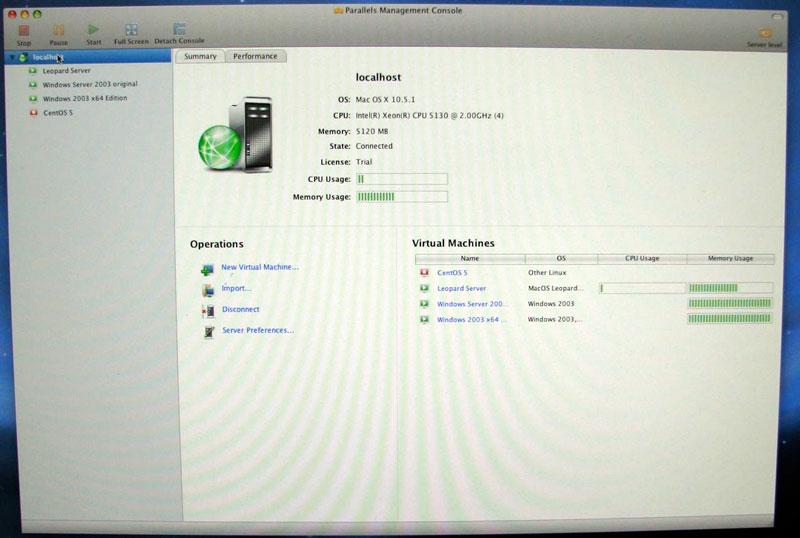
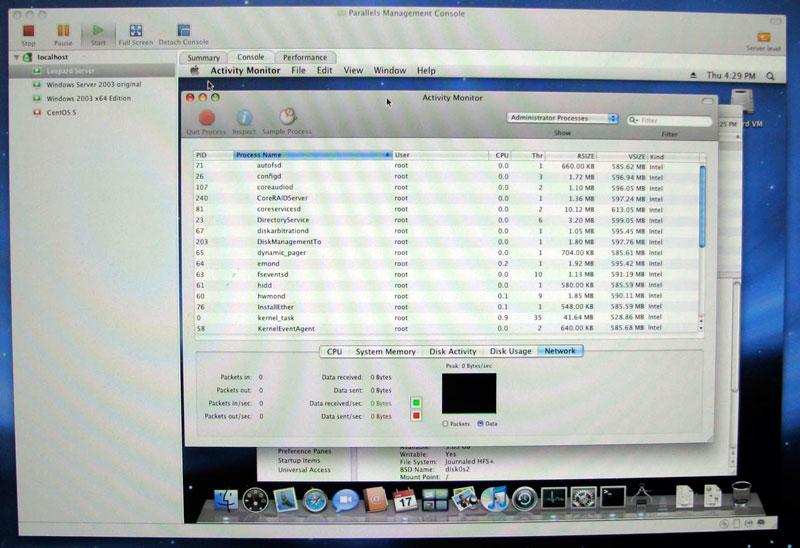

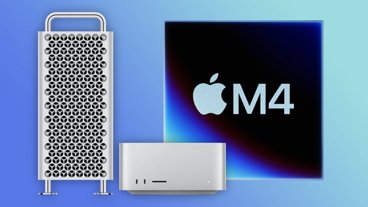





-m.jpg)






 Wesley Hilliard
Wesley Hilliard
 Malcolm Owen
Malcolm Owen
 Mike Wuerthele and Malcolm Owen
Mike Wuerthele and Malcolm Owen
 Amber Neely
Amber Neely
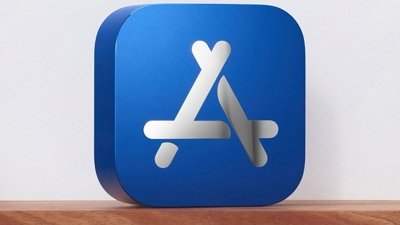
 William Gallagher
William Gallagher

 Christine McKee
Christine McKee
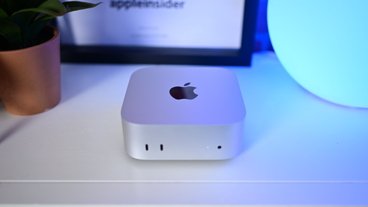








10 Comments
What are they waiting for? We can't hope Parallels will be then free (like it is with products/services that Microsoft or Google buy ;-) but still, wouldn't be Apple so much happier to have this technology under their wings?
What are they waiting for? We can't hope Parallels will be then free (like it is with products/services that Microsoft or Google buy ;-) but still, wouldn't be Apple so much happier to have this technology under their wings?
Not a stellar revenue opportunity. Virtualization is something that is probably best handled by 3rd party vendors. Microsoft has their virtualization tools but vmware is the Gold Standard in most houses.
Virtualization is rarely free (if it's good). Even when you have multiple vms going you have an increase in software licensing costs.
I think Apple's content to let Parallels and vmware slug this one out.
Wow, this is great stuff. I imagine a (not too distant) future where I can run an instance of Windows 2003 Server on an Xserve for the light stuff that I have a Dell PowerEdge rack mount doing now. I can't wait to see this final to try it out!
More possibilities
What are they waiting for? We can't hope Parallels will be then free (like it is with products/services that Microsoft or Google buy ;-) but still, wouldn't be Apple so much happier to have this technology under their wings?
I happen to agree, and can only guess that Apple doesn't purchase them (Yet), because of the LAWSUITS they WILL have to deal with if they do>
Now I know your saying "What in he$%^ll is this guy talking about???
Well first off, Apple gets suit for just about anything / everything they do. Can you imagen what will happen when EVERY computer in the WORLD could be an Apple, because Apples can run EVERY application available, for EVERY company using a computer, EVERY person who uses a computer.
Now I have said for many years, that Steve WOULD get back at Bill Gates, for stealing the Macintosh interface many years back, (I believe when MS announced Windows OS). What a better way to do it, then to have a computer that CAN run both Mac and Windows software seamlessly.
Talk about market share
A (generally) trouble free computer, running a (Generally) trouble free OS, on some REALLY slick computers, iPhones, iPods and who knows what else in the future ? and it ALL belongs to Steve Jobs / Apple.
I feel a movie coming on here
So, to get back on track.
Let Parallels and others fight, and perfect the software ? then Apple will purchase one if not all of them, and they will then "Rule the world" Damn it might be just a bit to early, with no coffee for me.
Skip